The Ultimate Chef’s Guide To Herbs And Spices
Different herbs and spices are used in cuisines all around the world to impart flavor on foods. Using herbs and spices can revolutionize your cooking and help it to become more authentic. As you develop as a chef, you’ll use them more and more, and eventually become familiar with what typically works well with different types of foods.
If you’re new to cooking, you might be daunted by the huge range of herbs and spices on offer. But there’s nothing to fear – there are no hard and fast rules. The bottom line is, it’s all about the taste, and sometimes experimentation can lead to unexpectedly delicious results.
What Are Herbs and Spices For?
So, what are herbs and spices actually for? Firstly and foremost, they can be used to add flavor and aroma to dishes. You can transform even simple dishes by adding exciting combinations of flavors, perhaps a sweet twist or a spicy kick. Herbs and spices are often fragrant too, helping food to smell delicious – often the first thing that determines whether we want to eat a meal.
Herbs and spices can also be used to enhance the taste of the foods they are cooked with. We often rely on salt to bring out the flavor of a meal that tastes bland, but many other spices, such as cumin, can also bring a greater depth to the natural flavors of your food.[1]
Finally, herbs and spices can change or deepen the color of what we’re cooking. You’ve probably heard the saying that ‘We first eat with our eyes’, attributed to the 1st Century Roman gourmand Apicius.[2] Well, Apicius was right, and color can give our food a more appealing look. A great example of this is Indian food, which is often a deep yellow, orange, or red color, due to spices such as turmeric or paprika.
Herbs and Spices 101
So, now we’re clear on what herbs and spices are for, we can start to look at them in more depth. First question: what’s the difference between an herb and a spice?
Herbs
Herbs are the friend of the physician and the pride of the cooks
Charlemagne, founder of the Holy Roman Empire
Herbs typically come from the leaves or greener parts of a plant, and can be found dried or fresh. They bring a fresh taste to meals, and when dried, this flavor becomes deeper and more concentrated, in some cases tasting wildly different from the fresh herb. This means that some dishes are best suited to fresh herbs, and others to dried herbs.
More tender and delicate herbs, such as basil, mint, parsley and chives, are often better tasting when fresh, as this can help showcase their flavors better. As they often have a more subtle taste, fresh herbs are best used in meals with shorter cooking times, or right at the end of more time-consuming dishes, to preserve their flavor. Fresh herbs also work better when garnishing your dishes, as they will be more fragrant, and the pop of brighter green can provide a stronger visual appeal to your dish.
For fresh herbs, there are two main storage methods. For the jar method, trim the stems of your herbs with a scissors or knife and place in a jar, filled about a third of the way with cold water. Cover the jar with a plastic bag and secure it with a rubber band at the base. Then, leave your jar on the fridge or countertop for as long as recommended.
The towel method requires you to wrap the herbs in a damp paper towel, then place them in a Ziploc bag. Then store in the fridge for as long as recommended.
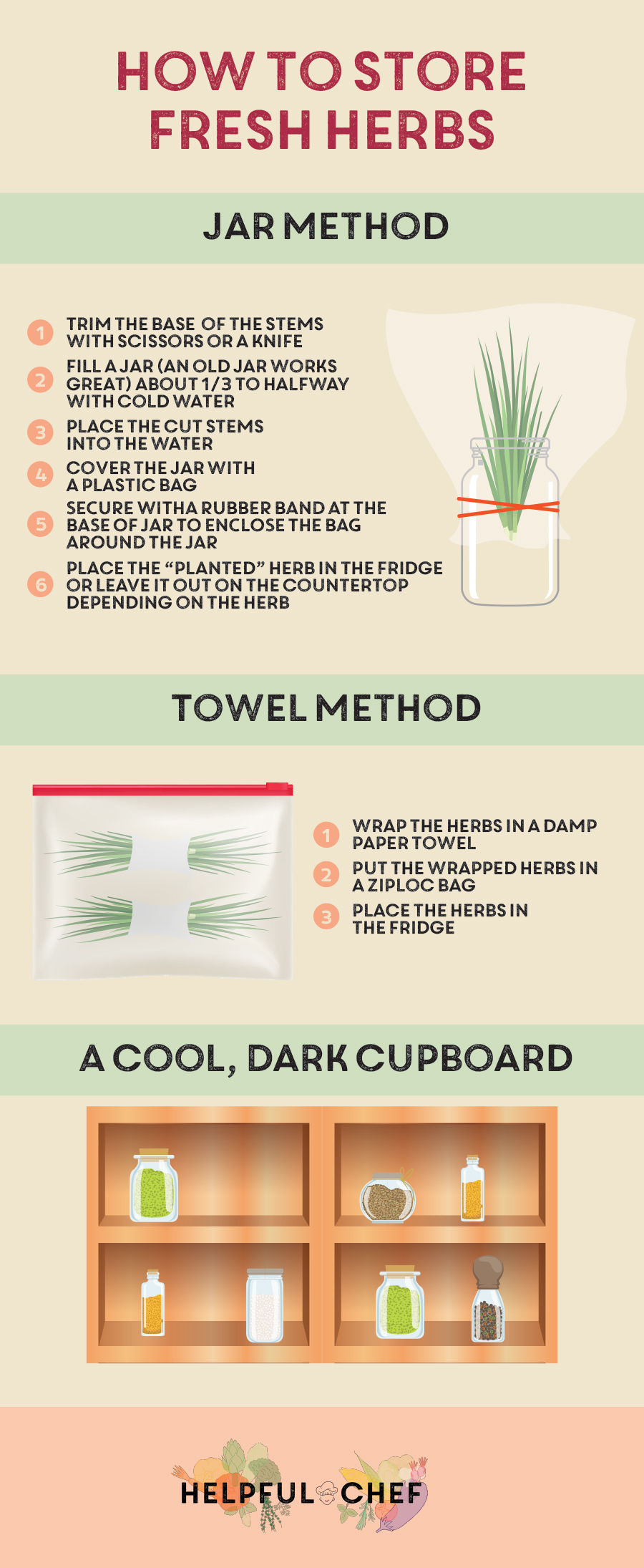
Dried herbs
Dried herbs have a stronger and more concentrated flavor, developed through the drying process. Tougher herbs, like oregano, rosemary and thyme, can actually taste better when dried.
Unlike fresh herbs, most dried herbs actually benefit from a longer cooking time, as they release their concentrated flavors slowly as they cook. This is because in order to release their essential oils and flavor compounds, they need enough time to soak up moisture from oil, butter, fat or water. More delicate dried herbs, such as marjoram, basil and dill should still be added towards the end of your cooking time though, as their flavoring and oils will evaporate if cooked for too long, leaving behind an unpleasant taste.
Most dried herbs benefit from being crushed between the fingers or in a pestle and mortar before using – this helps to wake up the flavors, resulting in a more flavorsome result.
If you’re subbing dried herbs in for fresh, always start out with about half the amount called for fresh herbs in the recipe. You can always add more if the flavor isn’t strong enough, but its far harder to recover if you’ve added too much!
Unlike fresh herbs, dried herbs are best stored away from air, heat, and sunlight – a cupboard is perfect, just make sure it isn’t over your oven or grill as your herbs will get too hot, this means you shouldn’t keep them too close to the stove neither.

Spices
While herbs tend to come from the leaves or green parts of a plant, spices are usually derived from plant seeds, roots or bark. Their flavor is typically stronger, and spices can be used to add red, orange and yellow colors to your dishes too. Unlike herbs, spices are almost always used dried. Sometimes they are found whole – such as with peppercorns, nutmeg, strips of cinnamon, seeds and roots – and other times they are ground – ground cinnamon, turmeric, or cumin, for example.
Spice blends
Spice blends or mixes are simply combinations of different dried herbs and spices. Many recipes call for a specific mix of spices, so it can be useful to have these ingredients blended before you cook. Spice blends can be bought pre-mixed, or you can blend yourself at home.
Just like dried herbs, spices and spice blends should be stored in a cool, dry and dark place like a cupboard.
Fresh Herbs – Flavor Notes and Pairings
In this section, we’ll cover the most common herbs, what they taste like, and what foods they work well with.
Basil

Basil is a sweet and peppery leaf, popular in Italian cooking. It pairs well with a range of foods, including:
- Chicken
- Beef
- Fish
- Tofu
- Bell peppers
- Eggplant
- Tomatoes
- Zucchini
Basil is a key ingredient in pesto, and is also found in Italian tomato sauces, soups, stews, and some curries. When cooking with fresh basil, remember to add it to the pan at the end – if cooked for too long, its flavor will be ruined.
You can store basil using the jar method on your countertop for 7 to 10 days.
Chives

Fresh chives look almost like grass, and have a mild onion-y taste. Fresh chives work great with:
- Chicken
- Fish and shellfish
- Eggs
- Potatoes
- Asparagus
- Onions
- Leeks
You can also use chives as a garnish, or in dips, soups, sauces and risottos. The best way to store chives is rolled in a damp paper towel in the refrigerator, where they’ll keep for 10 to 14 days.
Cilantro
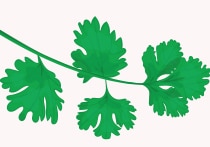
Cilantro, or coriander, is a bit of a controversial herb. Some people love it for its bright, fresh and citrusy taste, while others think it tastes like soap! There is actually a genetic component to our perception of how cilantro tastes:
This perception is believed to be a result of an enzyme that changes the way one senses the taste of coriander—a genetic trait that is still being researched upon.
Afsaneh Khetrapal, BSc (3)
If you enjoy the taste of cilantro, you might find it works well with:
- Chicken
- Fish and shellfish
- Lamb
- Tofu
- Lentils
- Avocado
- Tomatoes
- Bell peppers
If you don’t like it, you’ll be disappointed to hear that it’s commonly found in salsas, guacamole, chutneys, soups, curries and salads! The best way to store cilantro is in a jar in the fridge for 7 to 10 days.
Dill

Dill has a citrusy, almost grassy taste, with a subtle sweetness. It works well with:
- Fish and shellfish
- Potatoes
- Cabbage
- Cucumbers
- Carrots
- Green beans
- Tomatoes
You can also add dill to omelettes, potato salad, sauces, salad dressings, and dishes with yoghurt. To store dill, roll it in a damp paper towel and put it in the refrigerator for up to two weeks.
Lemongrass
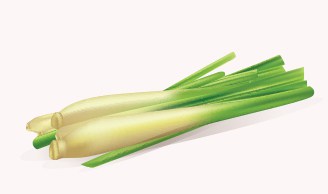
Lemongrass has a zesty, citrusy flavor, and is central to the fresh zing in many Asian foods, especially Thai dishes. Lemongrass complements:
- Chicken
- Beef
- Pork
- Fish
- Bell peppers
- Tomatoes
You’ll most commonly find lemongrass in Asian soups, curries, other rice dishes, marinades, and even some teas. Lemongrass is best stored rolled in a damp paper towel in the fridge for up to two weeks.
Marjoram

Marjoram is from the same family as oregano, and has a grassy and slightly sweet flavor.
- Carrots
- Mushrooms
- Peas
- Spinach
- Zucchini
- Tomatoes
- Chicken
- Beef
Marjoram works great in stuffings, salad dressings and brown butter sauce, as well as in soups and risottos. The best way to store marjoram is rolled in a damp paper towel in the refrigerator, where it will keep for 10 to 14 days.
Mint

The sweet, cooling sensation of mint can add a subtle freshness to a wide range of dishes. It is surprisingly flexible when used in moderation, working well alongside:
- Carrots
- Eggplant
- Watermelon
- Mushrooms
- Tomatoes
- Potatoes
- Zucchini
- Beans
- Lentils
- Lamb
Mint is very versatile, and works well in a range of dishes from fruit salads to curries, cream sauces, marinades and soups. When preparing mint, cut with a sharp knife, and try not to bruise the mint by cutting back and forth over the same areas. You can store mint in the refrigerator using the jar method. Mint should keep for 7 to 10 days.
Oregano

Oregano tastes pungent and peppery, with a less sweet, more woody flavor than marjoram. It works well with a range of foods, including some stronger flavors, such as:
- Artichokes
- Bell peppers
- Eggplant
- Mushrooms
- Tomatoes
- Potatoes
- Zucchini
- Chicken
- Beef
- Lamb
- Fish
A staple in Italian cooking, oregano works well in tomato sauces, pizzas and salad dressings. Store it in the refrigerator using the paper towel method for 10 to 14 days.
Parsley

Parsley is a commonly used herb in European and Middle Eastern cooking which has a fresh, grassy flavor. There are two varieties: flat-leaf and curly. Flat-leaf parsley has a more robust flavor, whilst curly parsley is more typically used as a garnish. We love to pair parsley with:
- Mushrooms
- Peas
- Potatoes
- Tomatoes
- Cucumber
- Zucchini
- Lamb
- Beef
- Chicken
- Fish
- Tofu
Parsley also works well in sauces, salads and as a garnish. Store it in a jar in the fridge for 7 to 10 days.
Rosemary

Rosemary is a peppery and woody yet somewhat floral herb with a complex bitter taste. It’s distinctive flavor and aroma works surprisingly well with a wide range of foods, such as:
- Mushrooms
- Peas
- Tomatoes
- Potatoes
- Chicken
- Lamb
- Pork
- Tofu
Rosemary also works very well in focaccia bread, soup, stews and tomato sauces. You can also have it on pizza, or with roasted veggies for a simple but delicious side. The best way to store rosemary is using the paper towel method and keeping it in the refrigerator for 10 to 14 days.
Sage

A member of the mint family, sage is a savory, woody herb that is used in a range of European and Middle Eastern dishes. Sage works well with:
- Brussel sprouts
- Eggplants
- Peas
- Winter squash
- Pork
- Beef
- Turkey
Perhaps most famously, sage makes up one half of the traditional sage and onion stuffing. It also works nicely with roasted vegetables, as well as in salad dressings, soups, risottos, and tomato-less sauces such as brown butter sauce. Keep it stored in a damp paper towel for 10 to 14 days in the refrigerator.
Tarragon

An essential herb in French cuisine, tarragon is a peppery herb with a mildly licorice-y aroma. It works really well with the following:
- Artichokes
- Carrots
- Leeks
- Mushrooms
- Potatoes
- Spinach
- Chicken
- Beef
- Lamb
- Fish
Tarragon is great for salad dressings and garnishes – tarragon mixed with butter works really well over salmon or beef. It also works well in egg dishes like omelettes, and gazpacho. Store fresh tarragon in the refrigerator using the jar method. It will keep for 10 to 14 days.
Thyme

Thyme is another commonly used herb in Europe and the Middle East, with an earthy, minty and lemony flavor. In fact it goes really well with lemon and garlic, and also works really nicely with:
- Carrots
- Peas
- Potatoes
- Winter squash
- Tomatoes
- Chicken
- Pork
- Lamb
- Duck
- Fish
Thyme is another favorite for cooking with roasted veggies, and also works well alongside rice dishes and stews, or in dips and tomato sauces. Use the paper towel method to store thyme in the refrigerator for 7 to 10 days.
When and Why To Use Dried Herbs
Fresh herbs are wonderful and fresh, but don’t last as long as dried herbs. In this section, let’s check out the best dried herbs to keep in your cupboard.
Basil

Although fresh basil has a more fragrant aroma and fresh taste, dried basil shouldn’t be overlooked. It’s more concentrated and pungent flavor remains sweet and actually develops an almost minty note during the drying process, which works really well with:
- Bell peppers
- Eggplants
- Potatoes
- Tomatoes
- Zucchinis
- Cheeses
- Chicken
- Fish
- Pork
Dried basil works well in salad dressings and sauces, as well as dry rubs and marinades for grilling. It also pairs well with these other dried herbs:
- Garlic powder
- Rosemary
- Thyme
- Marjoram
- Oregano
Oregano

Dried oregano is a really useful herb to have on hand, and its concentrated earthy flavor can impart a distinctly Italian flavor on any dish. It pairs nicely with the following:
- Artichokes
- Tomatoes
- Bell peppers
- Zucchinis
- Potatoes
- Mushrooms
- Beans
- Chicken
- Fish
- Lamb
- Pork
Dried oregano can elevate soups, salad dressings, dry rubs and marinades, but shines best when paired with anything tomato-based, like pizzas and pasta sauces. It works really well alongside these dried herbs and spices:
- Chili powder
- Bay leaves
- Thyme
Rosemary

Dried rosemary tastes earther and heartier than fresh rosemary, which is perfect when you want more of a savory kick. It works really well with these foods:
- Mushrooms
- Peas
- Potatoes
- Onions
- Beans
- Chicken
- Lamb
- Pork
- Fish
Dried rosemary really shines in breads, creamy sauces, vinaigrettes, marinades and dressings, and also works well in hearty soups and stews. Try it alongside these other dried herbs:
- Garlic powder
- Oregano
- Thyme
- Basil
Thyme

Dried thyme retains a lot of the strong fragrance and flavor of fresh thyme. It works really well with a number of different foods:
- Carrots
- Tomatoes
- Zucchinis
- Cauliflower
- Green beans
- Peas
- Beef
- Chicken
- Fish
- Lamb
- Pork
- Lentils
Due to its similar flavor, dried thyme can be used effectively as a substitute for fresh thyme. The flavor is more concentrated though, so be sure to use about a third of the required volume of fresh thyme to start, then flavor to taste. Dried thyme is also great in soups, salad dressings, dry rubs and marinades, as well as alongside these dried herbs:
- Oregano
- Rosemary
Cilantro

Dried cilantro has a similar earthy and peppery flavor to fresh cilantro, but it’s a lot milder. This makes it a great substitute for fresh cilantro if you’re trying to introduce someone to the flavor of cilantro, or are trying to acquire a taste for it yourself. It works best with the following:
- Bell peppers
- Potatoes
- Onions
- Tomatoes
- Chicken
- Beef
- Fish
- Pork
- Tofu
Dried cilantro is also great in curries, soups and sauces if added early so it can release its flavors, as well as stuffing, dry rubs and marinades. It is complemented well by the following dried herbs and spices:
- Chili powder
- Cumin
- Cinnamon
Spices – Flavor Notes and Pairings
Now that we’ve covered herbs, let’s direct our attention towards spices. Their typically stronger flavors and brown, red orange or yellow hues will impart different tastes and colors onto whatever you’re cooking. You can store dried spices in the same way as you store dried herbs: in a cool dark place like a cupboard away from your stove.
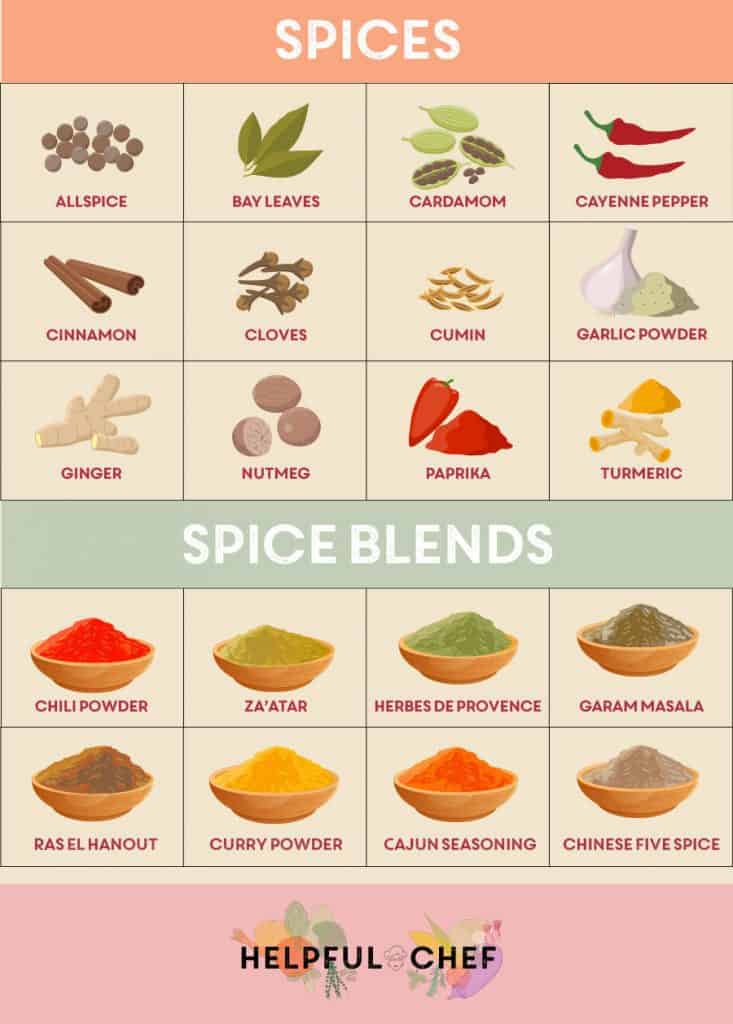
Allspice

Also known as Jamaica pepper, myrtle pepper, pimento or pimento, the name ‘allspice’ comes from the flavor, which tastes like a combination of cinnamon, nutmeg and clove. It’s complex earthy and sweet flavor works well with:
- Apples
- Beets
- Cabbage
- Carrots
- Squash
- Sweet potatoes
- Turnips
- Beef
- Lamb
Allspice is a key ingredient in Caribbean cuisine and the Jamaican jerk seasoning, and also tastes good in soups, desserts and breads. Try it alongside these other spices:
- Cardamom
- Nutmeg
- Cinnamon
- Cloves
- Ginger
- Mace
Bay leaves

Bay leaves are dried aromatic leaves which can impart an herbal and floral flavor when cooked. However, when eaten whole, they are pungent, sharp and bitter, so remember to remove them before serving! Bay leaves can enhance the flavor of the following foods:
- Potatoes
- Tomatoes
- Mushrooms
- Beans
- Lentils
- Shellfish
Bay leaves can enhance risottos and soups, and are also essential in Indian cuisine, where they are used in biryani and as an ingredient in the spice blend garam masala. They can also be used in a range of French and Italian dishes to provide a depth of flavor. Bay leaves work well alongside these dried herbs:
- Oregano
- Sage
- Thyme
- Marjoram
Cardamom

Cardamom is a spice made from the small triangular seed pods of plants native to Asia. Their strong, unique and sweet aroma and flavor works well alongside:
- Carrots
- Citrus
- Corn
- Peas
- Sweet potatoes
- Squash
- Chicken
- Pork
- Duck
- Lentils
Cardamom is used commonly in Indian cooking, as well as Nordic baking. Ground cardamom is used in the Middle East as a spice in sweet dishes. Cardamom can be used in curries and rice dishes, Indian masalas (spice blends) and Thai curry pastes. It goes nicely with these other spices:
- Cinnamon
- Cumin
- Ginger
- Turmeric
Cayenne pepper

The cayenne pepper spice comes from dried and ground peppers of the same name, which are moderately hot red peppers. Cayenne pepper can add a warming heat to the following foods:
- Eggplant
- Potatoes
- Zucchini
- Bell peppers
- Corn
- Tomatoes
- Chicken
- Beef
- Fish
Cayenne pepper is great in rice dishes and soups, as well as salad dressings, sauces and marinades. It also tastes really good with lemon. Just be sure to use it sparingly! Try cayenne pepper alongside these spices:
- Cumin
- Paprika
- Cinnamon
Cinnamon

Cinnamon is an earthy, sweet, aromatic spice obtained from the inner bark of a range of evergreen shrubs and trees. It can be found in sticks of dried bark, or ground into a powder. Cinnamon tastes great with sweet fruits and vegetables, working really nicely alongside:
- Apples
- Carrots
- Pears
- Sweet potatoes
- Squash
- Chicken
- Lamb
Cinnamon tastes great in fruit sauces, desserts, breads and cereals, and is used in some savory dishes in European cuisine. It is also commonly found in Christmas drinks like eggnog! Cinnamon is often paired with these spices:
- Allspice
- Cloves
- Nutmeg
Cloves

Cloves are dried flower buds from trees in the myrtle family. Dried cloves are aromatic, earthy, sweet and flavorful, and you often won’t need to add much to notice their flavor. Cloves work well with the following:
- Apples
- Beets
- Squash
- Tomatoes
- Sweet potatoes
- Lamb
As well as working well in curries, soups and marinades, cloves can be used effectively in breads and desserts. Ground cloves are typically found in spice blends like pumpkin pie spice, and cloves work very nicely with these dried herbs and spices:
- Cinnamon
- Nutmeg
- Allspice
- Basil
Cumin

Smoky, earthy cumin is derived from the seeds of the cumin plant, which can be ground or used whole. It has a distinctive flavor that works nicely alongside these foods:
- Eggplant
- Tomatoes
- Zucchini
- Carrots
- Corn
- Green beans
- Beans
- Chicken
- Beef
- Fish
- Pork
- Lentils
- Tofu
Cumin is also used in curries, rice and soups, as well as sauces, dry rubs and marinades. It’s often the spice to reach for if you’re looking for a ‘Tex-Mex’ or Mexican flavor. Cumin works really well alongside the following herbs and spices:
- Garlic powder
- Turmeric
- Ginger
- Cinnamon
- Oregano
Garlic powder

Derived from dehydrated garlic, garlic powder can be used to add a garlicky, savory flavor to a range of dishes. Try it alongside these foods:
- Cabbage
- Tomatoes
- Zucchini
- Carrots
- Mushrooms
- Beans
- Chicken
- Beef
- Fish
- Tofu
Garlic powder works nicely in curries, stir-fries, soups, sauces, dressings, dry rubs and marinades – anything you’d add garlic to, really – and is also a common ingredient in spice blends. It complements the following dried herbs and spices, too:
- Oregano
- Cumin
- Coriander
- Turmeric
Ginger

Ginger is a fragrant, sweet and warming spice, which can be used fresh or ground. It works well alongside the following:
- Carrots
- Citrus
- Sweet potatoes
- Beets
- Squash
- Chicken
- Beef
- Fish
- Pork
- Tofu
Ginger is regularly used in Indian recipes, as well as Chinese, Korean, Japanese and Vietnamese recipes. Try it in rice dishes, curries and stir-fries, as well as marinades. Ginger works really well with:
- Garlic powder
- Chilli powder
Nutmeg

Nutmeg can be found as whole seeds or ground spice powder, and it has a sweet, earthy and nutty flavor. It can be used alongside these foods:
- Broccoli
- Cabbage
- Carrots
- Squash
- Cauliflower
- Sweet potatoes
- Lamb
Nutmeg works nicely in both sweet dishes like pumpkin pie and rice pudding, and savory dishes like rice, stuffings and sauces. Nutmeg pairs well with:
- Allspice
- Clove
Paprika

Made from dried and ground peppers, paprika is a sweet and warming spice used to add depth, flavor and a reddish orange color to a range of dishes. Paprika tastes great alongside these foods:
- Bell peppers
- Squash
- Cauliflower
- Broccoli
- Potatoes
- Chicken
- Shellfish
- Lamb
- Tofu
Paprika is most often used to heat and color rice dishes, as well as stews and soups, and works well in salad dressings and marinades too. It works well alongside the following spices:
- Garlic powder
- Chili powder
- Cardamom
- Cinnamon
- Cumin
Turmeric

Turmeric has a warm, bitter, peppery flavor and an earthy aroma, and its bright yellow color can be used for coloring dishes. It goes well with the following:
- Cauliflower
- Cabbage
- Potatoes
- Sweet potatoes
- Beans
- Lentils
- Chicken
- Fish
- Tofu
Turmeric is a key ingredient in a range of Asian dishes such as curries and rice dishes, and a range of Iranian dishes begin by caramelizing onions in oil and turmeric. Turmeric is also a key ingredient in the spice blend ras el hanout. It tastes good alongside these other spices:
- Garlic powder
- Cardamom
Herb and Spice Blends
Spice blends, whether store-bought or blended by yourself, are really handy combinations of spices to have in your cupboard when cooking. Let’s check out the most useful and popular spice blends.
Chili Powder
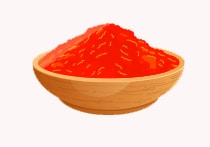
Chili powder can be used to add an instant kick to any dish. It gets its heat from a combination of:
- Ancho chili
- Paprika
- Cumin
- Mexican oregano
Chili powder is a super versatile spice blend, often used to add spice or smokiness to soups, sauces, and salad dressings. It can also be used when grilling, barbecuing or smoking as a dry rub or marinade. Chili powder works best with:
- Corn
- Tomato
- Cauliflower
- Green beans
- Beans
- Squash
- Chicken
- Beef
- Fish
Za’atar
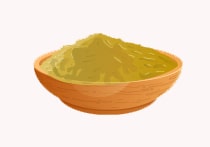
Confusingly, the word ‘za’atar’ refers both to an herb and a spice blend. In Arabic, the word ‘za’atar’ refers to both thyme and marjoram. The warming, slightly bitter spice blend is composed of:
- Thyme
- Sesame seeds
- Sumac
Za’atar is commonly used for dry rubs or added to Middle Eastern bread dips, and tastes amazing with the following foods:
- Eggplant
- Sweet potatoes
- Squash
- Onions
- Carrots
- Chicken
- Beef
- Lamb
- Fish
Herbes de Provence
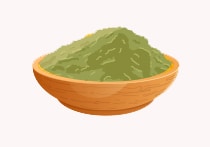
Herbes de Provence is a mixture of dried herbs from the Provence region of France. It is typically comprised of a mixture of some or all of the following herbs:
- Savory
- Rosemary
- Marjoram
- Thyme
- Oregano
- Sage
- Tarragon
The earthy flavor of herbes de Provence can be used for grilled meats and fish, in soups and stews, or cooked with oil to infuse their flavor into the food. It can also be used in dry rubs and marinades. Herbes de Provence works best with the following foods.
- Onions
- Potatoes
- Zucchini
- Eggplant
- Tomatoes
- Chicken
- Beef
- Lamb
- Fish
Garam Masala
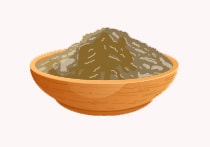
Garam masala is a blend of spices from South Asia, and is commonly used in South Asian cuisines. Garam masalas can vary widely based on region and personal taste, but often compose of a blend of some or all of these spices:
- Cinnamon
- Nutmeg
- Cloves
- Cardamom
- Mace
- Peppercorns
- Cilantro
- Turmeric
- Cumin
The warm, sweet and bitter flavor of garam masala blends work really well in curries, rice dishes, and some stir fries, as well as marinades and dressings. Garam masala is great with these foods:
- Potatoes
- Broccoli
- Cauliflower
- Green Beans
- Squash
- Chicken
- Beef
- Beans
- Lentils
Ras El Hanout

Ras el hanout is an Arabic spice mix. Its name means ‘head of the shop’, implying that the blend is comprised of the best spices the seller has to offer. Typically, this is a mixture of some or all of the following:
- Cardamom
- Clove
- Cinnamon
- Paprika
- Coriander
- Cumin
- Nutmeg
- Peppercorn
- Turmeric
Ras el hanout has a spicy and sweet flavor that works well in a range of savory dishes like couscous, pasta, or rice, as well as as a dry rub or marinade for meats and fish. Ras el hanout works well with the following foods:
- Onions
- Tomatoes
- Dates
- Prunes
- Carrots
- Chicken
- Beef
- Lamb
- Fish
- Beans
- Lentils
Curry Powder
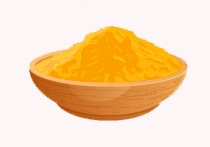
Curry powder is a blend of spices from the Indian subcontinent, intended to work as a ready-made blend which would replicate the flavor of a generic Indian sauce. Curry powders will typically contain a blend of some or all of the following spices:
- Turmeric
- Ginger
- Garlic powder
- Cilantro
- Cumin
- Fenugreek
- Red pepper
Curry powder has a warm and spicy flavor, working well in a massive range of curries, rice, soups, sauces, stir fries and marinades. When using curry powder, don’t hesitate to add other herbs or spices to get a more personalized flavor. Curry powder works well with a wide range of foods:
- Cauliflower
- Cabbage
- Zucchini
- Broccoli
- Green beans
- Chicken
- Lentils
- Pork
- Tofu
Cajun Seasoning
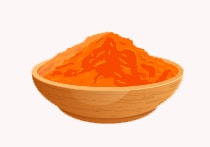
Cajun seasonings are a mix of spices typically used in Creole and Cajun cooking. They tend to be a mix of the following spices:
- Black pepper
- Paprika
- Cumin
- Cayenne pepper
- Thyme
The spicy, earthy flavor of Cajun seasoning blends works especially well as a dry rub for meat or fish, and can work well with roasted veggies, dips, and the Cajun staple, gumbo. It works well alongside the following foods:
- Bell peppers
- Onions
- Celery
- Carrots
- Chicken
- Beef
- Pork
- Shellfish
Chinese Five Spice
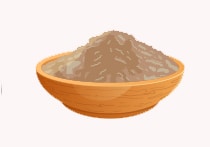
Chinese five spice seasoning is a combination of five spices, reflecting the five traditional Chinese elements of flavor: sweet, bitter, sour, salty and umami. Chinese five spice seasoning typically contains a blend of:
- Cassia
- Clove
- Fennel
- Star anise
- Szechuan peppercorns
The overall flavor is predominantly warm, sweet, and bitter, which can be used effectively in stir fries, rice dishes, and rubs and marinades, particularly on fattier meats. Five spice works particularly well with:
- Bell peppers
- Broccoli
- Carrots
- Celery
- Shiitake mushrooms
- Beef
- Duck
- Pork
- Tofu
Global Cuisines

Herbs and spices are used in recipes all over the world in different cuisines. If you’re trying to emulate a dish from another culture, it will taste far more authentic if you try to stick to the herbs and spices traditionally used in that cuisine. In this section, we’ll list the main herbs and spices from a range of global cuisines.
Mexican food
Herbs:
- Cilantro
- Oregano
Spices:
- Cumin
- Garlic powder
- Cinnamon
Spice blends:
- Chilli powder
Caribbean food
Spices:
- Allspice
- Nutmeg
- Cloves
- Cinnamon
- Ginger
Spice blends:
- Cajun
French food
Herbs:
- Thyme
- Rosemary
- Oregano
Spices:
- Nutmeg
Spice blends:
- Herbes de Provence
North African food
Spices:
- Cardamom
- Cinnamon
- Cumin
- Paprika
- Turmeric
- Ginger
Spice blends:
- Ras el hanout
Cajun food
Herbs:
- Oregano
- Thyme
- Rosemary
Spices:
- Cayenne pepper
- Paprika
- Bay leaves
- Spice blends:
- Cajun seasoning
Thai food
Herbs:
- Basil
- Spices:
- Cumin
- Garlic
- Ginger
- Turmeric
- Cardamom
Spice blends:
- Curry powder
Mediterranean food
Herbs:
- Oregano
- Rosemary
- Thyme
- Cilantro
- Basil
Spices:
- Bay leaves
- Cardamom
- Cinnamon
- Cloves
- Ginger
Indian food
Herbs:
- Cilantro
Spices:
- Bay leaves
- Cardamom
- Cayenne pepper
- Cinnamon
- Cumin
- Ginger
- Nutmeg
- Paprika
- Turmeric
Spice blends:
- Garam masala
- Curry powder
Middle Eastern food
Herbs:
- Oregano
- Cilantro
Spices:
- Bay leaves
- Cardamom
- Cinnamon
- Gloves
- Cumin
- Ginger
Spice blends:
- Za’atar
- Garlic powder
Summary
So now you know all about a huge range of herbs and spices. Don’t be afraid to try some of these new flavors into your cooking – if you’re stuck, take a look at the herbs and spices that will complement the one you’re using, or pick a cuisine and try to stick to what’s typically used. The more you use herbs and spices in your cooking, the easier they’ll be to incorporate into your meals.
FAQs
Q: I’m new to using herbs and spices – where do I start?!
A: With so many different herbs and spices out there, it can be hard to know where to begin. If there’s a certain cuisine you love, perhaps something with a more distinctive flavor like Mexican or Italian, you could start by focusing on the spices commonly used in that cuisine.
Rather than chucking everything in at once, take the time to focus on each spice, and taste your food in between adding new ones to see how the flavor changes. Over time, you’ll become quite familiar with the different herbs and spices of your favorite cuisines, so you can move onto something else.
Q: how much spice Should I add to my meal?
A: It can be hard to work out how much of an herb or spice to add when cooking. Even when following a recipe, sometimes the amounts won’t be quite right for your palette. When you’re starting out, the best thing to do is add small amounts and taste your food as you go. That way, you can build up to the flavor you like – whereas if you add too much straight off the bat, there’s no going back! And try to remember that flavoring your food with herbs and spices isn’t about exact measurements like baking is – as long as it tastes good, everything is alright.
Q: How do I know if a certain herb or spice will work with my meal?
A: Great question, sometimes one more herb or spice can make or break a meal! But you don’t have to guess – one trick we like to use is smelling your meal and your herb or spice pot together. If the aromas smell confusing or clashy together, maybe it’s not the best choice, but if they complement each other, go ahead and add some, there’s a good chance it’ll work! Don’t go too crazy with how much you add and be sure to taste after flavoring to ensure you get the right balance.
References
[1] Anestis Dougkas, Marine Vannereux, Agnès Giboreau (1 December 2019), ‘The Impact of Herbs and Spices on Increasing the Appreciation and Intake of Low-Salt Legume-Based Meals’. Accessed at: https://www.ncbi.nlm.nih.gov/pmc/articles/PMC6950109/.
[2] Charles Spencea, Katsunori Okajimab, Adrian David Cheok, Olivia Petit, Charles Michel (December 2016), ‘Eating with our eyes: From visual hunger to digital satiation’. Accessed at: https://www.sciencedirect.com/science/article/pii/S0278262615300178.
[3] Afsaneh Khetrapal, BSc (31 March 2021), ‘The Genetics of Coriander’s Soapy Taste’. Accessed at: https://www.news-medical.net/health/The-Genetics-of-Corianders-Soapy-Taste.aspx.

